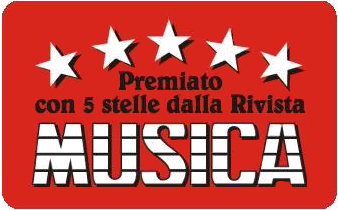WDR Sinfonieorchester, Eötvös, Tamayo, Mercier, Lischke Eötvös conducts Stockhausen: Gruppen, Punkte
If Dostoevsky once said that Russian literature came from Gogol’s The Overcoat, then the whole of twentieth-century music after 1950 comes from Gruppen.
György Kurtág
Artists
Gruppen
WDR Sinfonieorchester Köln
Conducted by
Arturo Tamayo (orchestra 1),
Péter Eötvös (orchestra 2),
Jacques Mercier (orchestra 3)
Punkte
WDR Sinfonieorchester Köln
Conducted by Péter Eötvös
Assistant conductor: Wolfgang Lischke
About the album
In association with Westdeutscher Rundfunk, Köln
Recorded by WDR at Messe Rheinlandsaal, Köln 28.05./02.06.1997 (1); Kölner Philharmonie 08-09.06.2004 (2)
Recording producers: Wolfgang Becker (1), Harry Vogt (2)
Recording supervisor: Stephan Hahn
Sound engineers: Christoph Gronarz, Dieter Wohlfromm, Georg Litzinger, Reiner Kühl
Technique/editing: Angelika Schraml, Katharina Kiefer, Michaela Höck, Walter Platte
Music publisher: Universal Edition
Portrait photo: István Huszti
Cover art / Art-Smart by GABMER
Produced by László Gőz
Executive producers: György Wallner, Tamás Bognár
The recording was sponsored by the Ministry of Cultural Heritage and the National Cultural Fund of Hungary
Reviews
Robert Matthew-Walker - International Record Review (en)
Richard Whitehouse - Gramophone (en)
Paul Driver - Sunday Times **** (en)
Blair Sanderson - AllMusic ****1/2 (en)
Timothy Ball - Classicalsource.com (en)
Laurent Bergnach - Anaclase.com (fr)
Pierre-Jean Tribot - ResMusica.com (fr)
Jean-Baptiste Baronian - Crescendo (fr)
Rémy Franck - Pizzicato **** (de)
Gianluigi Mattietti - Il Giornale della Musica (it)
Edoardo Lattes - Musica ***** (it)
Francisco Ramos - Scherzo (es)
Enrique Sacau - Mundoclasico.com (es)
P.B. - Musica Classica (pt)
Katarzyna Musiał - Muzyka21 - płyta miesiaça (pl)
Dalos Anna - Muzsika (hu)
Molnár Szabolcs - Gramofon *** (hu)
Galamb Zoltán - ekultura.hu (hu)
Csont András - Magyar Narancs (hu)
Dauner Nagy István - Cafe Momus (hu)
Komlós József JR - Alföldi Régió Magazin (hu)
Karlheinz Stockhausen:
Karlheinz Stockhausen:
The album is available in digital form at our retail partners
In mid-1957 the Hungarian composer György Kurtág, then at the very start of his career, arrived in Cologne. He missed the première of Stockhausen’s Gruppen für 3 Orchester by a few months, but when Stockhausen played him a tape of the work, he was utterly astounded. Later, he said “if Dostoevsky once said that Russian literature came from Gogol’s The Overcoat, then the whole of twentieth-century music after 1950 comes from Gruppen”. Fifty years later, one can still share Kurtág’s astonishment. It’s not just that the work remains amazingly innovative and inventive; even the circumstances under which it arose still seem hard to credit. One is dealing here with a work by a post-war orphan in his late twenties who had graduated from the Musikhochschule in Cologne only a few years earlier. Previously he had had only one orchestral work – Spiel – played, in controversial circumstances (a subsequent one, the first version of Punkte, was withdrawn unperformed). Now, working initially in complete isolation, in a little attic flat in a Swiss alpine village, he suddenly came up with a work that redefined the possibilities of orchestral music, both sonically and conceptually. In a book of interviews published in 1959, Robert Craft asks Igor Stravinsky “What piece of new music has most interested you in the last year?”, and the octogenarian master-orchestrator replies “Stockhausen’s Gruppen”; he goes on to especially praise the sound of the orchestra, and the rhythmic invention.
Gruppen is written for an orchestra of 109 musicians, Straussian in size, but not in constitution: in addition to prominent parts for piano and electric guitar, it calls for no less than 12 percussionists. However, the most obvious novelty of this orchestra is that it is divided into three spatially separated groups – one to the left of the audience, one in front, and one to the right – each of which has its own conductor. A primary reason for the three conductors is that, for much of the work, the three orchestral groups play simultaneously at different tempi. This notion of the possibility of different simultaneous tempi is one that has haunted many composers since, and in his most recent works, Stockhausen too has come back to it: in the recent Hoch-Zeiten (2002), the five groups of performers all play at different tempi.
Although it contains some spectacular spatial effects, and some overwhelming mass textures where virtually every musician has a separate part, such things are not what Gruppen is primarily about. Or rather, they are just one element. One of Stockhausen’s preoccupations in the mid-fifties was the notion of the continuum: the idea that one posits apparent opposites or ‘extremes’ (such as sound/noise, long/short, fast/slow) so that one can construct a refined scale of intermediate values that mediate between these extremes. So for him, orchestral music doesn’t just mean tuttis: it means everything from solos, via chamber music and medium-sized ensembles, to the full complement, whether acting in a unified, homophonic way (a ‘tutti solo’), or as an entropic outburst of separate parts (i.e. a huge number of simultaneous ‘solos’), or somewhere in between. It’s surely no accident that within the first couple of minutes of Gruppen, each of the three orchestras has a miniscule violin solo, the third of which detonates the first of many subsequent orchestral eruptions.
Clearly, one can’t give a blow-by-blow account of a work as complex as Gruppen. However, amidst all the dazzling diversity, one can certainly offer listeners a few pointers, especially to those passages where all three orchestras play in synchronisation. There are actually many of these, but some in particular stand out as ‘set pieces’. The first, starting at about the three-minute mark, once again involves a solo violin, but on a much more extended basis than previously. Here, over the course of a couple of minutes, the orchestral forces build up, momentarily swamp the violin, and then die away again. The second, starting at around 9’30”, and likewise lasting a couple of minutes, features those marginalia of the traditional orchestra that had become central to the avant-garde orchestra: above all, percussion and the ‘harmony instruments’ (piano, harp, guitar etc.). The third, and perhaps most spectacular (from c. 14’30” onwards), initially has a sinister, almost martial quality, partly due to its emphasis on brass instruments. The latter gradually increase in density and intensity to what is perhaps the most celebrated (though also simplest) moment in Gruppen, where a single held chord is passed from one orchestra to another. Then comes an explosive piano solo, followed by an extraordinary passage, becoming ever more complex, which finishes by challenging the limits of what human ears can actually take in. Following this acoustic apocalypse (at about 18’ 45’), the final minutes of the work have (perhaps inevitably) a sort of valedictory quality, despite a final outburst just before the end.
Listening to Gruppen half a century after it was composed, one can’t help being struck by a paradox. On the one hand, it remains one of the most strikingly ‘revolutionary’ works of the 20th century. On the other, heard in retrospect, it seems utterly imbued with (Austro-) Germanic tradition: one can’t imagine it having been written by a composer from any other region. There are even echoes (surely entirely unconscious!) of a composer like Berg: both the extended 3-orchestra brass passage mentioned earlier and the ‘breathy’ chord at the very end seem like radical resonances from the world of Wozzeck.
And perhaps there’s another link to the great Austro-German tradition. Josef Haydn was in the habit of writing “Laus Deo” (praise be to God) at the end of his scores. At the end of Gruppen, Stockhausen writes “Deo gratias” (thanks be to God). Given the enormous effort this work must have cost him, one could reasonably interpret this as a sigh of relief (i.e. “Thank God!”). But there’s undoubtedly more to it than that: this is the young Catholic composer who went daily to mass before going the WDR studio to realise his electronic works (one of which was initially meant to be an Electronic Mass, but finished off as the epoch-making Gesang der Jünglinge: not a liturgical work, but most emphatically a sacred one). The ‘Deo gratias’ at the end of Gruppen should be taken literally.
Punkte is both earlier and later than Gruppen. The first version was composed in 1952, and was an exceptionally austere instance of what Stockhausen referred to at the time as ‘pointillistic music’ (‘punktuelle Musik’): music consisting of isolated (but highly organised) splashes of sound. The work never played; a performance had been arranged, but Stockhausen decided to substitute Kontra-Punkte, which went on to be his first published work. By the time he came back to Punkte a decade later, enormous changes had taken place, not only in his own work, but in the whole state of the New Music he had been pioneering at the start of the fifties. The fragmentary textures of the early fifties were a thing of the past: now the fascination was with dense textures (such as had already formed a part – but only a part – of Gruppen). It’s in the spirit of these new times that Stockhausen reworked his old score: the isolated sounds of the original piece become ‘hinges’ on which he now hangs whole new webs of sound. Sometimes these webs move up or down from the original note, and sometimes they converge on them from above or below. But it’s not just a matter of adding; often he sculpts holes in these webs, hollowing out ‘negative spaces’, so to speak.
After the première in Donaueschingen in 1963, Stockhausen wasn’t entirely satisfied. Maybe the piece was caught a little between two stylistic worlds, and in places it was certainly rather discontinuous: perhaps too inclined to stop and start. The next year Stockhausen made a few initial revisions, but then, in 1966, he came back to the work again, and now the changes were more significant. For example, various moments are “placed under the magnifying glass”, to use the composer’s phrase, and as a result the work becomes several minutes longer. But even more striking, perhaps, is the introduction of many ‘signals’ and little melodic figures, particularly in the oboe parts. This too is a sign of the times: the purism of the fifties had given way to the pluralism of the sixties, and one could take a certain delight in introducing ‘foreign bodies’ that would have been utterly taboo a decade earlier. Even then, though, Punkte hadn’t quite achieved its definitive form: the last touches were added in 1993, 30 years after the première (it is the 1993 version that is recorded here, for the first time on CD).
The result, though not ‘epoch-making’ in the sense of Gruppen, is both extraordinary and unique: there’s no other work that sounds or feels quite like the final version of Punkte. What started out as an apparently abstract conception finishes off as a work of almost startlingly visceral immediacy: an instance of savage sensuality that is perhaps unique in Stockhausen’s work.
Richard Toop
stockhausen.org
wdr.de/radio/orchester/sinfonieorchester
eotvospeter.com



